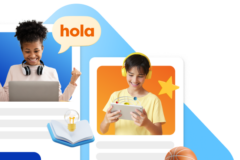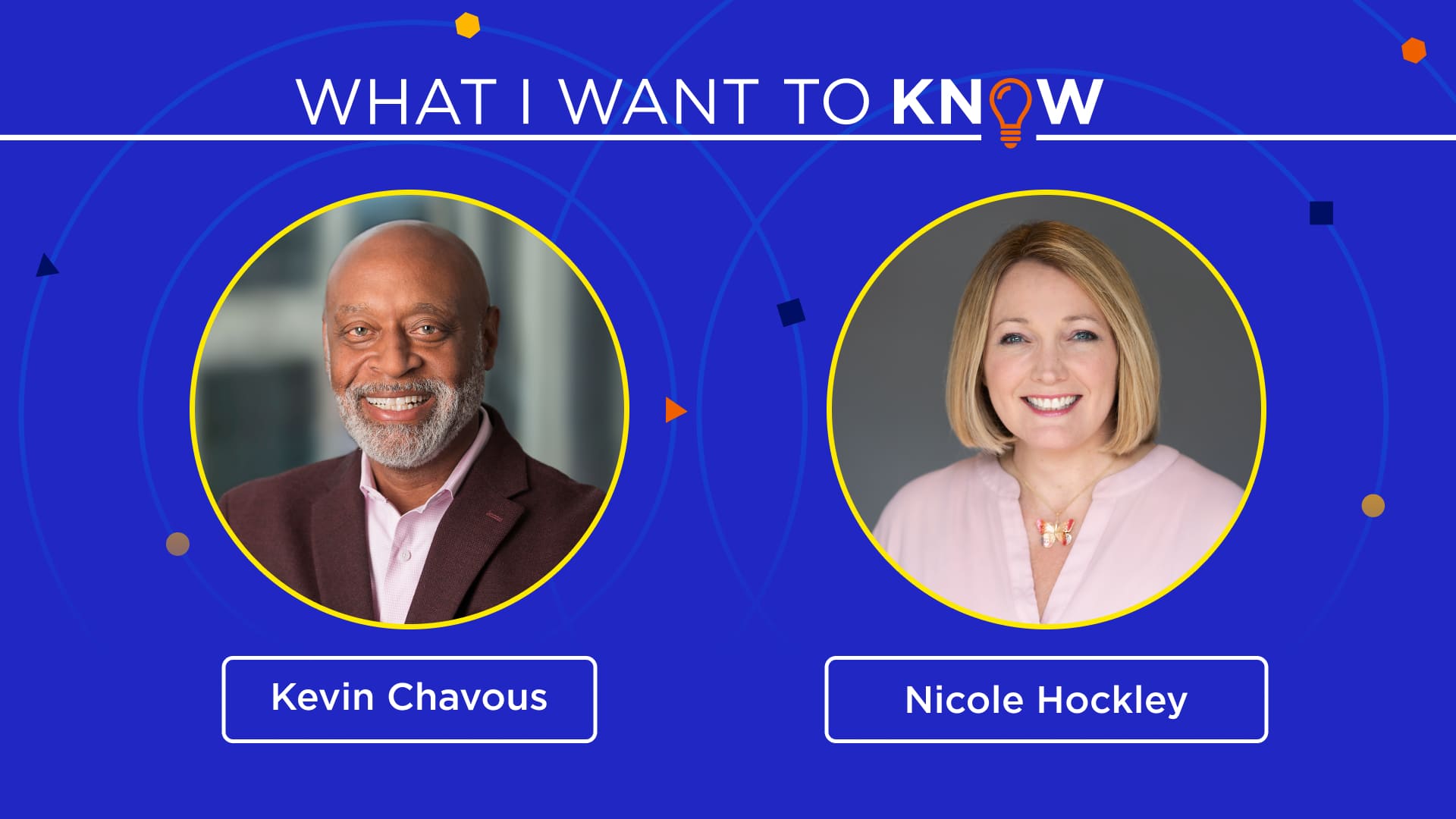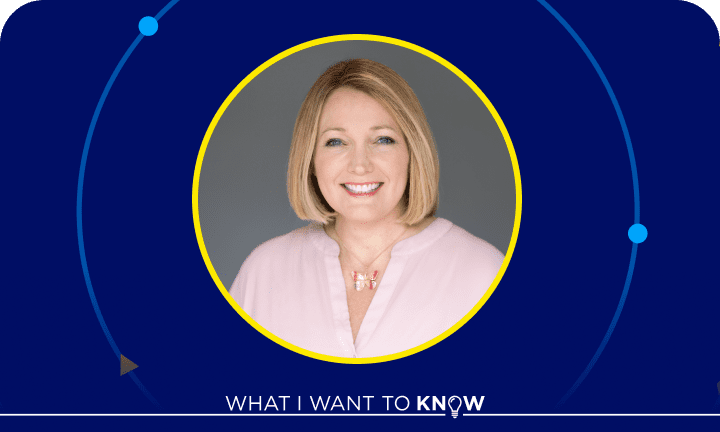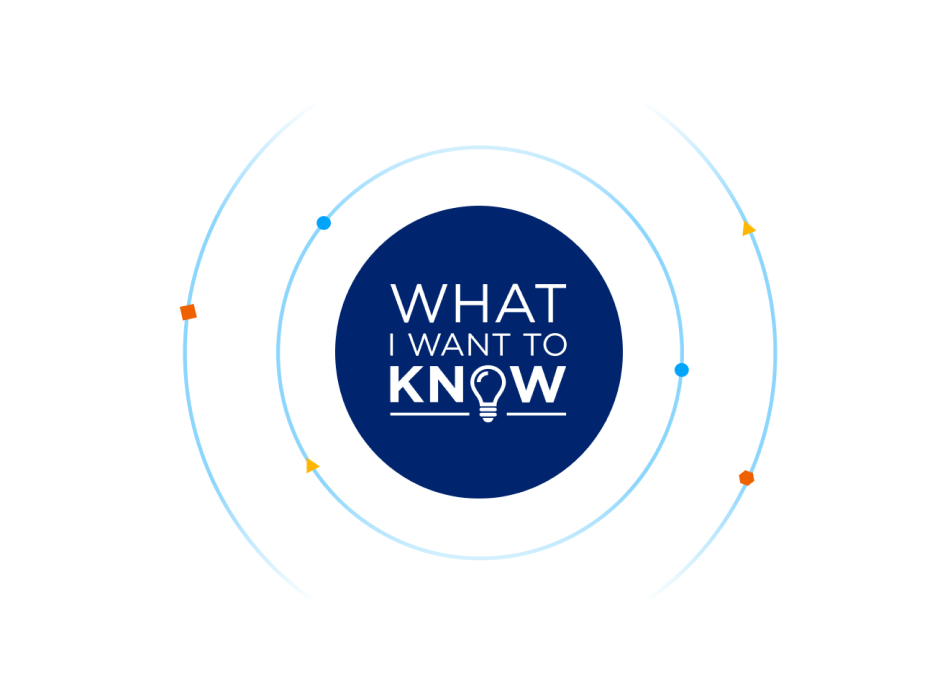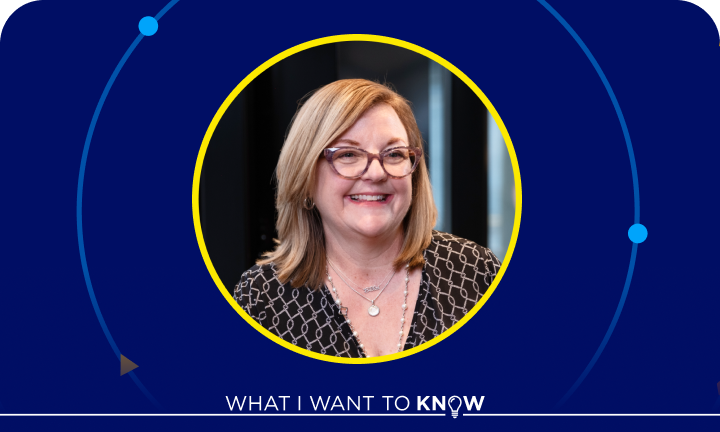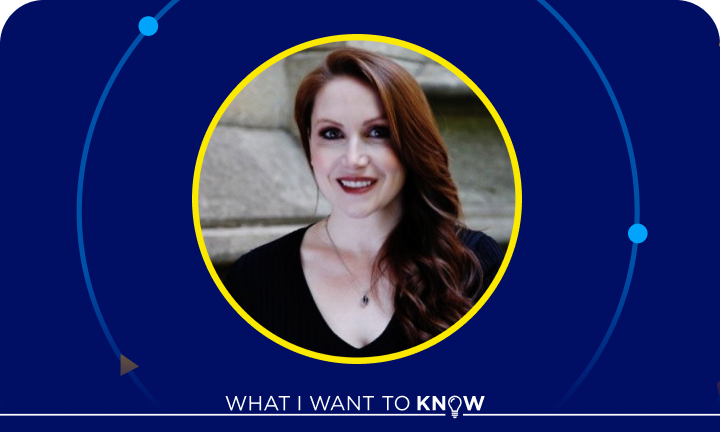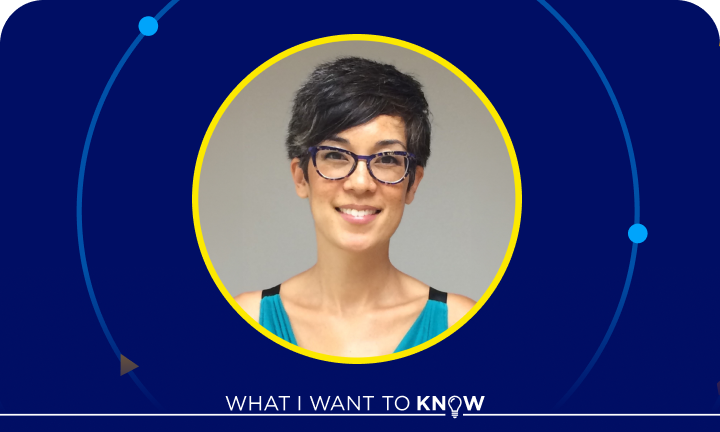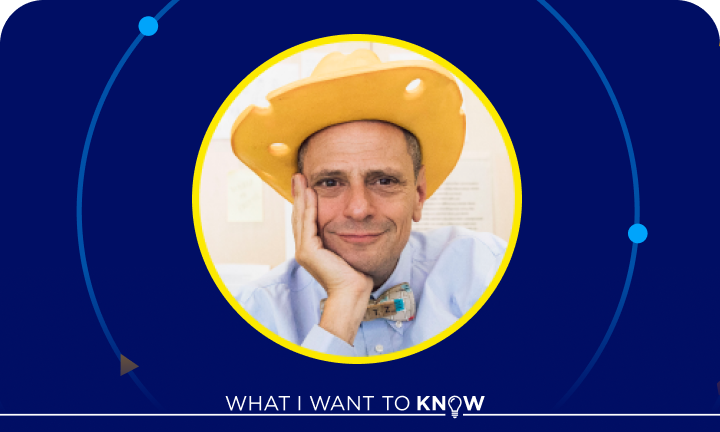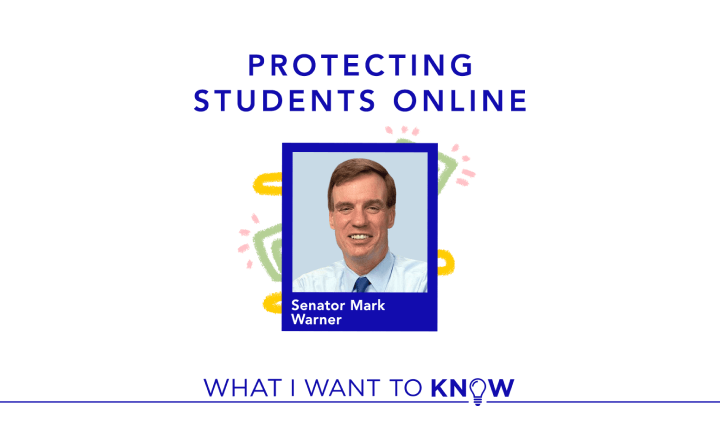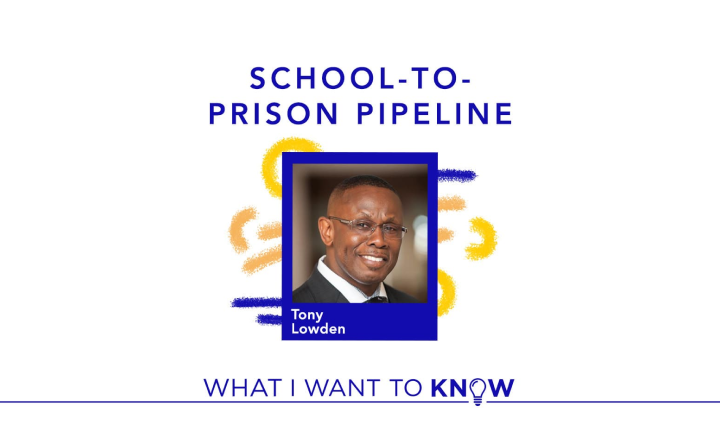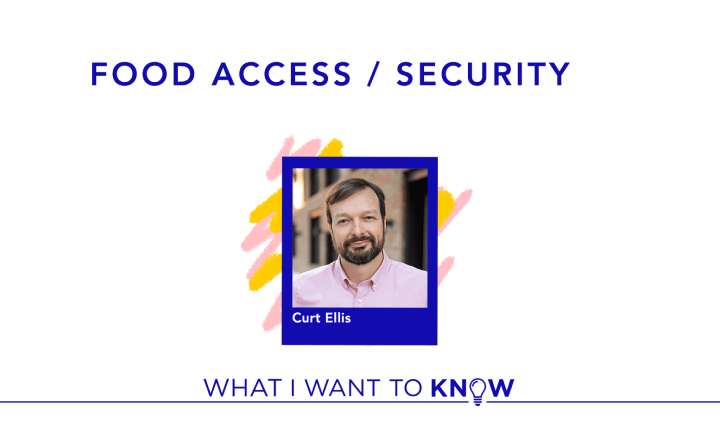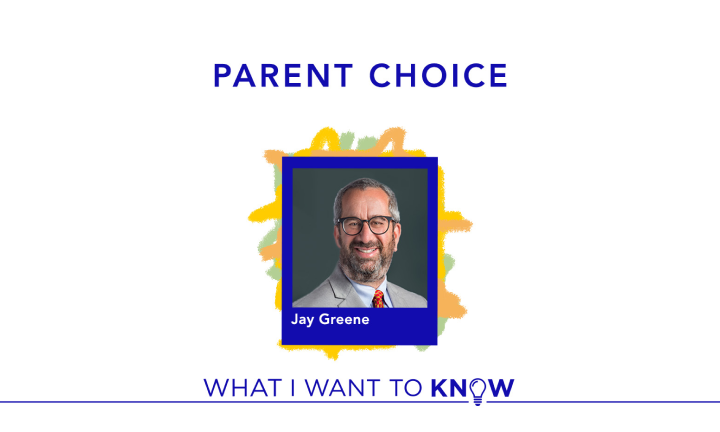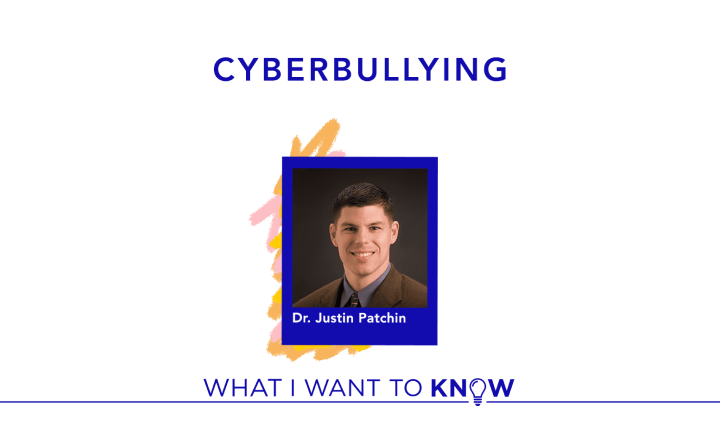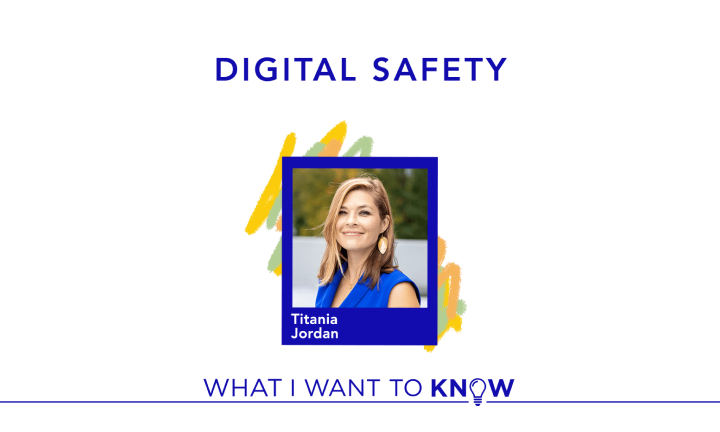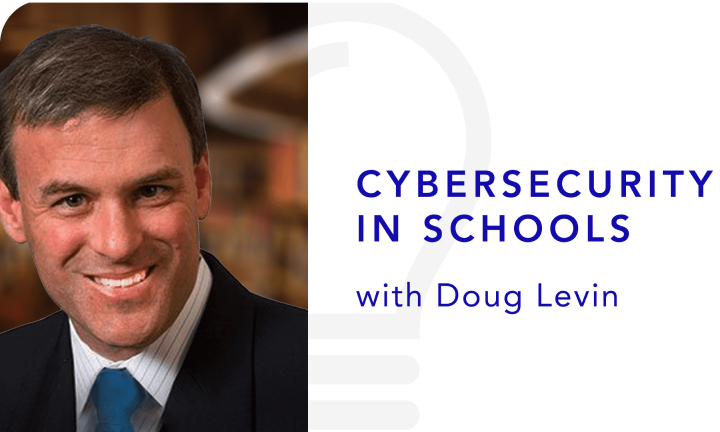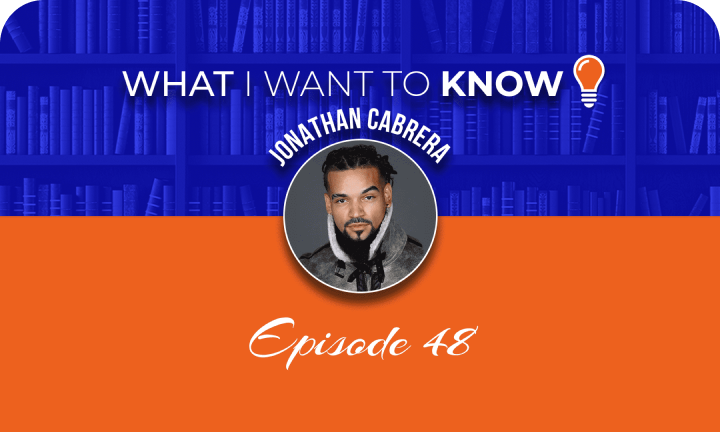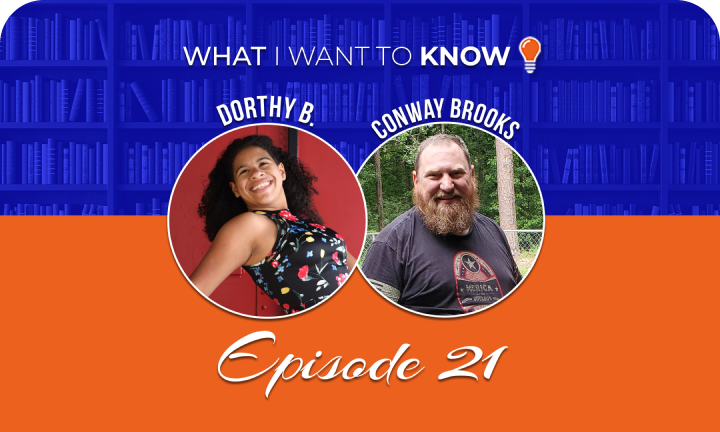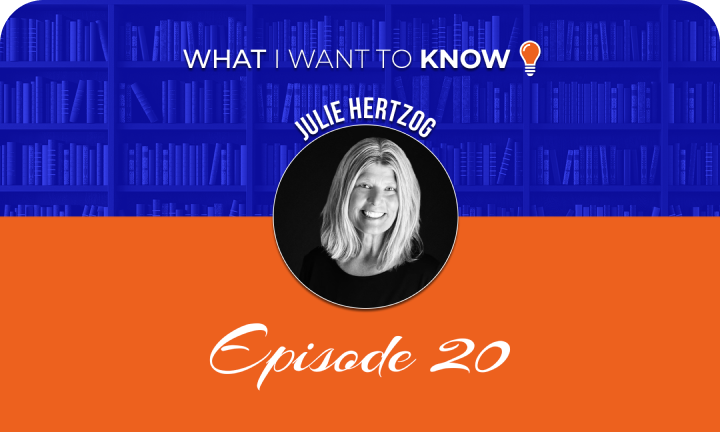April 24, 2024
EP. 151: How can we prevent violence in schools?
According to the CDC, guns are the leading cause of death among American children and teens. From mass shootings to isolated incidents, gun violence has emerged as a tragic issue continuously plaguing our schools.
How can we identify the signs of violence? How can students, parents, and educators safely intervene? And how can we prevent violence in schools?
In this episode, Nicole Hockley, CEO of Sandy Hook Promise, joins Kevin to discuss how to prevent school violence.
Listen on: Apple Podcast, Spotify
Meet Nicole
Nicole Hockley is the co-founder and CEO of the Sandy Hook Promise Foundation.
After her youngest son, Dylan, was murdered during the Sandy Hook Elementary School tragedy, Nicole transformed her grief into action. She works every day to protect children from gun and school violence.
Kevin: According to the CDC, guns are the leading cause of death among American children and teens. From mass shootings to isolated incidents, gun violence has emerged as a tragic issue continuously plaguing our schools. How can we identify the signs of violence? How can students, parents, and educators safely intervene? And how can we prevent violence in our schools? This is “What I Want to Know.” And today I’m joined by Nicole Hockley to find out.
Nicole Hockley is the co-founder and CEO of the Sandy Hook Promise Foundation. After her younger son, Dylan, was murdered during the Sandy Hook Elementary School tragedy, Nicole transformed her grief into action. She works every day to protect children from gun and school violence. She joins us today to discuss how we can prevent violence in schools. Nicole, welcome to the show.
Nicole: I’m so glad to be here with you. Thank you.
Kevin: This whole issue of gun violence in our schools, gun violence in America, it is such a hot-button issue, but the reality is it impacts people front and center, people like you. And when you started the Sandy Hook Foundation, it really was at a time when you had to deal with your own son’s death. And you’ve done many of these interviews, but I want to start off by really asking you to talk about how you could channel that grief into action, because that’s one of the hardest things that any parent has to do when they have to address some personal tragedy like that.
Nicole: You know, everybody’s journey after grief or trauma is so completely different. I know, you know, there are some people that I’ve met over the years especially who don’t find their voice for several years or never find their voice and prefer to grieve privately. And I think it’s about you have to be true to who you are. And I am the sort of person that needs to do something. I’ve always been very active in my life. I have no fear about using my voice for what’s right and for stepping out of a comfort zone.
And I think also, you know, I helped launch Sandy Hook Promise only one month after the shooting at Sandy Hook school. But it’s because I had to get answers to the questions that I had. I had to get answers to understand: How did this happen? How could it have been prevented from happening? What do I tell my surviving son who was also there that day? And how do I learn more and share that knowledge? How do I make change because this is just wrong? And so that is why I decided to go down this path and have been on this path for the next 11 years and will be on it for the rest of my life.
Kevin: Unfortunately, Nicole, other parents are still going to have to deal with issues like this. I mean, we just had something, you know, the Super Bowl.
Nicole: Yes.
Kevin: And it’s crazy reality. How were you able to, within a month, play a role in founding the Sandy Hook Promise Foundation complete with, you know, a mission and figuring out what to do?
Nicole: Yeah. And I don’t want to . . . This was not, like, an overnight thing. And I was not alone in this either.
Kevin: No, I know that. I know that. But you know what I’m saying. I mean, just the whole idea of how do you channel that action, you know, the way you did.
Nicole: You know, when Dylan was killed, it ripped my entire family apart. I believe it literally changed who I am as a person. I know I’m not the same person that I was now. I’m getting closer to the person that I was before, but I’ll never be my pre-’12, ’14 self again.
Kevin: Yeah.
Nicole: So I don’t know. When Dylan was torn from my life, that was a humongous hole in my heart, because I have so much love for my sons and so much love for Dylan. And how do you fill that gaping, bleeding heart, other than trying to do something to honor them? So, you know, I definitely knew I wanted to do something. And I remember before launching Sandy Hook Promise, I was already involved in giving some statements in front of some of our Connecticut state legislators with my husband at the time, Dylan’s father. But it was really, you know, when I found out that community members had been pulling together to create what became Sandy Hook Promise and create a platform for any family, and get it set up, I was like, “That’s the way forward.” And then I’ve learned everything since then.
But, you know, thanks to some amazing people and support from the very start, and just the need to find a way to honor my son because it’s not natural for a child to be taken from you like this. And I just couldn’t let his memory be forgotten. He was only 6, but I want to give him a very, very, very long legacy and know that people will always remember him.
Kevin: It’s beautiful that the Sandy Hook Promise Foundation is not only still in existence, but thriving and influential. So let’s talk about the foundation and its mission and programs. Just share a little bit of that for many of the school audiences listening.
Nicole: Sure. Well, the mission of Sandy Hook Promise is really to ensure that we’re educating young people and the adults around them how to recognize the warning signs when someone is at risk of hurting themselves or hurting someone else and then to intervene. And that’s really critical for cultural change because when you talk about the issue of gun violence prevention in school shootings, at the moment, it so quickly becomes a political or a divisive issue versus this is just about keeping kids safe and teaching them how to help each other. But that also creates long-term cultural change because we know if we can recognize signs, then we can make interventions. And I know, you know, the Sandy Hook school shooting had the signs that that shooter gave off ever been acted on and intervened, what happened on December 14th, 2012 wouldn’t have happened.
And that’s the sad fact that most mass shootings and indeed most school shootings and most suicides are preventable because signs are given off, but we haven’t been educated on what to look for and how to intervene. So that’s really our mission is to get that out there. And then we support all of that with parallel paths on legislative action, so bipartisan policy action to keep students safe, to provide resources for schools to be able to fund violence prevention programs and mental health resources as well. And I think we’ve been successful at a state level, at a federal level, and in schools across the country because we’re not interested in fighting with someone, we’re not interested in getting involved in the politics. We just want to keep kids safe, and that’s something that we can all agree on.
Kevin: I have a 7-year-old granddaughter, a 4-year-old grandson. And my granddaughter has talked about, you know, what they have to do when they go through these emergency prepared steps. I mean, on one hand, it breaks my heart, but then I also know that when you talk about preventative steps, these are the kinds of things you talk about. So lay out a couple of examples of what these preventative steps are and how they can make a difference.
Nicole: Sure. Well, Sandy Hook Promise really focuses on upstream violence prevention. And not everyone totally understands what that means. Imminent danger is where you have things like security. So there’s a lot of groups that advocate for security systems in schools or metal detectors as kids walk through, or, like you mentioned, active shooter drills. I personally don’t believe that that is a healthy thing for our kids to go through. I find it traumatizing. And schools are a place of community and friendship and belonging. And you shouldn’t feel afraid to go to school. You shouldn’t feel that you’re being policed at your school.
So we really focus on upstream violence prevention, which is how do we help create connections early really on, because when you think about the spectrum of violence, at one end it can start with things like bullying and being isolated. And then as a child progresses and as they go through things like adolescence and puberty and different behaviors start manifesting, the spectrum of violence can escalate. So it could go into substance abuse. It could go into dating violence. It could go into cutting, other forms of self-harm, and at the extreme end, suicide or homicide. So when you think about that as, like, a series of dominoes, upstream violence prevention is really how do we get really at the start of a domino chain and get in between the dominoes to stop the next one from falling over.
So the programs that we offer are things like Start with Hello, which is a program that teaches kids how do you recognize when someone is isolated, not healthy alone time because we all need that, nut when someone is being isolated or has withdrawn. And how do you reach out and create a connection with them? Because we all need to be seen and heard and valued, and that’s an important part of Start with Hello. So it’s really unlocking tools that are already within kids, but helping them practice it so that we have more connected communities.
One of our other programs is Say Something. And that’s where we teach kids, primarily a little older, although we’re testing it out in elementary schools as well, how do you recognize warning signs of potential violence or self-harm? How do you recognize when someone is really withdrawing or giving away things or bragging about an attack or is in danger themselves and needs help? How do you recognize that sign and how do you act on it by talking to someone or getting help? So they’re simple programs, but they are changing our behavior, and that’s really what is needed to help solve this problem.
Kevin: What’s fascinating about this, Nicole, and I viscerally connect with what you’re saying, is that with almost every one of these shootings, it could be schools or otherwise, and then they find out who the person is and you unpack it. It’s like what you said. I mean, the person’s withdrawn. You could tell he had issues. And we even hear things like, “Well, I’m not surprised.” It seems to me that what you’re talking about is a common sense approach, yet on the other hand, knowing how schools and school districts work, sometimes it’s hard to change, and they go to not the upstream, but what my granddaughter goes to. So talk a little bit about that tension.
Nicole: That can be tricky. And I have a lot of both sympathy and compassion for superintendents and principals and educators in general, because, my gosh, they have a lot to deal with. And while also trying to look after the students and give the youth everything they need, they’re dealing with demands from parents. They also have politics to consider and funding. There’s a lot going on and a lot to cram into the school experience as well.
What I want to see and where we’ve seen change with so many of the schools that we work with is really putting youth safety first and putting the wellness of our students and our children first. It’s not something that you just tick the box on. So I have experienced some school districts that are overwhelmed or for whatever reason are just like, “Well, I need to, you know, school shootings and I need to do more on school safety. Parents are demanding things, so I’ll put in the security system, or we’ll practice active shooter drills every quarter.”
That is a step, but for me that’s kind of tick the box. That’s not really addressing what is going on in terms of youth risk behaviors, what is school safety? What does it mean for a child to feel safe? And do we ask that question enough of our students and our children? Do active shooter drills make them feel safe? Do security systems make them feel safe? Or does connection make safety?
So I think it’s important to come from a student’s perspective and really ask that question, “What will make you feel safe?” And then address the problem that way. That’s upstream violence prevention.
So some people might think that it’s a heavier lift. It really isn’t. Our programs, for example, are super easy, do them in one classroom. We have sustaining activities throughout the course of the year. We set up clubs so that students can lead the activities as well. And everything we do is at no cost. So, really, whatever challenge I’ve heard from educators over the year, we figured out a way to ensure that it’s not a challenge for them. We do all the heavy lifting because, at the end of the day, they have enough on their plates, but we don’t want to be a tick-the-box exercise. We’re interested in the future of our children.
Kevin: You know, I’ve been active in education for 25 years or more, and I used to believe, and I strongly believe that, you know, the number one priority of schools was to make sure our kids . . . you build a community around the learning journey and becoming academically proficient, and being able to read, write, count allows you to compete. And I always felt that schools need to spend the bulk of their energy on that. But in the wake of not just Sandy Hook, but other things that we see that are happening, the uptick in suicides and all that, I actually believe, and I spoke to a group of superintendents, about 100 superintendents, and I told them, you know, a little bit about my journey and my sort of growth in this area. I think the number one issue going forward for educators is the mental health of their students.
Nicole: Totally agree.
Kevin: The absolute number one issue. Because if kids don’t feel safe, if they are dealing with the ramifications of trauma, if there are issues at home, if they aren’t getting proper nutrition, you can go through a list of things, then there’s no learning journey.
Nicole: Correct. Yeah. So spot on.
Kevin: And I think that transition is something we’ve got to figure out because a lot of . . . You can look at my gray beard. I’m a little old-school. Okay? But still, a lot of old-school educators feel like, you know, the reading, writing, counting. But we’ve got to make sure that the priority is on the mental health aspect of it. And I think what you’re talking about at least begins to get us to think about things in that way.
Nicole: Yeah. I couldn’t agree with you more. And I’ve had conversations with superintendents before who were like, “We invested all this money in security systems.” And I’m like, “Okay. What about the journey to school or the journey home from school? Or what are they going home to? Or what’s happening on the weekends? Or what happens in summer when school isn’t in session?” There are other systems and structures that we can put in place to ensure that the whole child is kept well. And the mental health issues. And, you know, when people say mental health, some people hear, you know, diagnosable disorders. That’s not really what we’re talking about here as well.
Kevin: Yeah. It’s mental health and well-being.
Nicole: Exactly, it’s well-being. It’s also conflict resolution skills, anger management skills. Those are all critical to our overall well-being as human beings. And I think that’s critical, and our kids are suffering right now in particular. There’s a lot of things that are distractions that get in the way that hurt them and their self-esteem and enable them to make bad choices because they seek community in other places if they’re not getting it where they need it. And I think, you know, it’s on all of us. It’s not just on the administrators or the superintendents. It’s on all of us to put children’s well-being first. And that’s not about security systems really.
Kevin: You mentioned earlier that one thing that the Sandy Hook Promise Foundation has been sort of disciplined about is not getting involved in the gun politics of the day.
Nicole: Yes.
Kevin: But it’s out there. And even when it comes to school leaders deciding to employ security or the active shooter drills, I mean, one could argue that a lot of that is to check the box and making sure that, you know, they’re addressing the politics in the way they can. I mean, you know what I mean?
Nicole: Fair point. Yep.
Kevin: So how can we move beyond that? I mean, I’m struck by the fact that as you work with state legislators, it’s so enlightening and heartening to hear that you get folks on both sides of the aisle because it is such a volatile issue, the gun issue. So talk about that.
Nicole: So a lot of times we take the gun out of the conversation because violence towards youth isn’t just from guns. Access to guns, for sure, especially in the case of suicide. I mean, firearm violence is the number one killer of kids under the age of 19.
Kevin: Yes.
Nicole: So, you know, that is a fact. That is a data point. There’s no emotion there, no spinning. It is a pure fact. So there are things that we need to do to ensure responsible access, secure storage, things like that. And I also want to come back to the point of, you know, I am not anti-security system or anti-SRO. But I do believe that there are no systematized best practices and guidelines. And building that should come from the perspective of the best welfare for the child.
So, like in Indiana, we have been working on a piece of legislation that is around active shooter drills, but it is about these are appropriate guidelines for active shooter drills. This is how to do it in a way that doesn’t traumatize a child and that helps. So there’s a lot of different ways to do that.
But when you think about gun violence in particular, and, you know, you can look at it within a school setting or you can look at it without a school setting where, you know, it’s only a sliver of gun violence that actually happens in schools. So, you know, I want to be clear about that as well. But the majority of . . . Part of the way that we talk a lot is, first of all, we’re all interested in the well-being of children. No one disagrees with that.
Secondly, it’s about bringing people into the conversation. The vast majority of people that are impacted by gun violence are gun owners. So it would not make sense to alienate a gun-owning family from a conversation when they want to be part of the solution. But the politics of the situation and the extreme voices of those politics make it not a safe place for them to engage. They feel either ostracized or alienated. And I’m like, “Look.” And I’ve had a conversation with a parent not too long ago where, you know, they own many guns, and I was like, “Well, tell me about why.” And it’s about protection of the family. And I’m like, “I get it. Things that we’re doing is about protecting your family as well. How do you work with your children on the guns? How do you educate them about that? How do you store it? How do you ensure that they’re not able to access it and accidentally hurt themselves or someone else?”
And these are genuine conversations that have nothing to do with politics. It isn’t about getting rid of the guns. It’s about the guns are here. People impacted by gun violence are often gun owners. So let’s work together to find those solutions because there is a lot more that we agree on than not. But it’s about having a conversation. And we don’t do that a lot.
Kevin: No. You’re absolutely right. Let’s talk about the impact of the work you’re doing and the foundation is doing. As I was doing my own research, I see that there have been actual attacks that have been prevented because of the steps that you all have put in place in many schools.
Nicole: Yeah. And I’ve got to say it’s saddening that it keeps happening, but we know our model works because we have the tangible evidence of it, and that’s particularly around the tool that we promote with our Say Something program, the Say Something Anonymous reporting system. We have a crisis center, a nationally accredited crisis center down in Miami, Florida, staffed 24/7/365 by the most amazing human beings who take tips that come in from the roughly 5 million youth that we serve across the country and they triage as to what is the tips we’re talking about someone’s in danger, someone’s in imminent danger, someone’s in imminent harm. And they work behind the scenes with the school team and local law enforcement, if it’s a life safety issue and if it’s appropriate for that community, to then create an intervention.
And the tangible results of that are thousands of mental health interventions, but also as a direct result of our programs and the training because we’re careful about our numbers. So when we call something a save, it has to have come from a school that we’ve been training in, it has to be that the first time that the school is aware of it or that the tip has been reported, it’s coming to our crisis center, and we have to have law enforcement and school team confirm that this was imminent danger. And as part of that, we know that we’ve saved over 500 youths from imminent suicide, like they were in the act, that they needed the mental health, a welfare check, and a hospitalization for observation at least. And in the case of school shooting attacks, we know, again, as a direct result of our programs that we are now at 16 school shooting, credible school shooting plots in many states across the country, Texas, North Carolina, Florida, all over that have been averted as a direct result of our programs. So that’s like 16 Sandy Hooks that haven’t happened. And it’s never going to be enough, but that’s what I continue to hold on to knowing the model works and I’ve just got to keep scaling it and getting it out there to more people.
Kevin: It’s amazing the work you’re doing. I really do connect with and it resonates with me your description of sort of changing the culture. And one of the culture phenomenons when it comes to shootings as a whole or even these random acts of violence that we see play out not just in schools, but in America’s streets is this sort of numbness or the shock value kind of leaves. And I think that that has been a troubling aspect and a barrier sometimes to the type of action or the sense of urgency around the action you’re talking about.
Nicole: I agree.
Kevin: How can we get around that? I mean, because, you know, you live it every day, and unless and until you are personally impacted by it, it’s easier to say, “Wow, that’s crazy.” And then you go on with your life.
Nicole: Yeah. Well, I did exactly that in 2012. Six months before my son was killed, I remember being in my living room ironing something and watching the news about Aurora, you know, the movie cinema shooting unfold online. And I remember thinking, “Oh, my God, that is horrific. Who’d think about this in this day and age? This doesn’t happen.” And then I got on with my ironing and my life and didn’t think about it again until it directly impacted my family in the worst way possible.
The problem that I see it is sometimes we forget about the human element of this. And I think if we aren’t already there, we are certainly not far from a point in this country where you will not be able to meet someone who hasn’t been touched in some way by gun violence or impacted by their family or someone that they know because it is so widespread. When you think about I think it’s over 50,000 deaths now per year, the number one killer of children under the age of 19, the stats have become so resounding and it’s so frequent. Mass shootings are so frequent now that they’re in and out of the news cycle in less than 24 hours. The daily shootings never even get coverage, so it’s kind of like a big blind spot for America, which is wrong for God knows how many reasons, but it also creates this sense of apathy.
When our politicians can’t seem to get their act together and they have done some things. I mean like the bipartisan Safer Communities Act in 2022 was a huge step forward, the first piece of federal legislation in over 30 years on gun violence prevention. Huge steps. More needs to happen, we all know that, because the deaths are continuing. But if people lose hope and think, like I’ve even seen people on the news say, well, this is just, you know, the price of freedom, or this is the cost of living in America.
Who thinks that’s okay? I mean, that is not right. And this is something that we need to fight about. And it’s the apathy that I think is one of our biggest challenges or the way we’ve become desensitized to it because it’s not right for kids to be killed in their schoolroom. It is not right for kids to be injured when they’re at a football, you know, when they’re at a parade celebrating the winners of the Super Bowl. It is not right to go to a movie theater and be looking for the exits because you’re afraid you’re going to be shot or to go to a mall or a church or a synagogue. That is not freedom.
So we talk about the price of freedom. That is not freedom at all. So this is something that we need to fight against, not allow ourselves to become desensitized and apathetic because there are solutions that work. And it doesn’t have to be something that you get into a fight over. These are just conversations between people because, like I said before, there’s more that we have in common than not.
Kevin: Yeah. Following up on that very point, and this is my last question, Nicole. This is what I really want to know. There will be some superintendents and school leaders that listen. They may have done the safety check thing. But what advice would you give them to dig a little deeper, think more upstream and figure out ways to embrace prevention within their school communities?
Nicole: Great question. And first, for anyone who . . . I want to apologize to any of your listeners that might have thought I was being a bit callous when I said, you know, the tick-the-box exercise. I have seen that before. I’m certainly not saying that every educator or administrator or superintendent does that. I can’t even imagine some of the pressures that they’re under on a daily basis.
But I think, again, it’s about really thinking about the well-being of your students. And upstream violence prevention, if we get that right, we don’t need the security systems because if we have better connections, if we have a sense of safety in our schools, then children aren’t going to want to bring a weapon to school to resolve their conflict with someone else. We have to work on the different tools to build within our young people and different ways and choices that they can make to deal with the issues going on in their life and support their mental health and well-being.
And if anyone thinks this is a heavy lift, it’s not. There are lots of programs available. Obviously, the ones from Sandy Hook Promise are available at no cost, and we do all the work for you. We really want to be helpful. So I would say, like, challenge yourself, or put yourself in your students’ shoes. If you’re going to school and practicing active shooter drills, walking through metal detectors every day, having backpacks, like all of those things, does that make you feel safe? Would that make you feel safe? And what would? Is it a more connected community? Is it if the adults around me and my peers heard me and seen me? If I had more friends? If I wasn’t being bullied? Like if I had a good home? If I felt safe? Those are the questions to ask because the solutions are not actually that difficult, we just have to lean in and take the time to do them.
Kevin: Well said. Nicole Hockley, you’re an American jewel. Thank you for joining us . . .
Nicole: Okay. I appreciate that.
Kevin: . . . on “What I Want to Know.”
Nicole: Thank you. Thank you.
Kevin: Thanks for listening to “What I Want to Know.” Be sure to follow and subscribe to the show on Apple Podcasts, Spotify, or your favorite podcast app so you can explore other episodes and dive into our discussions on the future of education. And write a review of the show. I also encourage you to join the conversation and let me know what you want to know using #WIWTK on social media. That’s #WIWTK.
For more information on Stride and online education, visit stridelearning.com. I’m your host, Kevin P. Chavous. Thank you for joining “What I Want to Know.”
About the Show
Education is undergoing a dramatic shift, creating an opportunity to transform how we serve learners of all ages. Kevin P. Chavous turns to innovators across education, workforce development, and more to ask: “How can we do better?”
Related Podcasts
Listen to more podcasts about this topic.
Featured Resources
Discover more resources that address the topics impacting students, families, and educators today.


